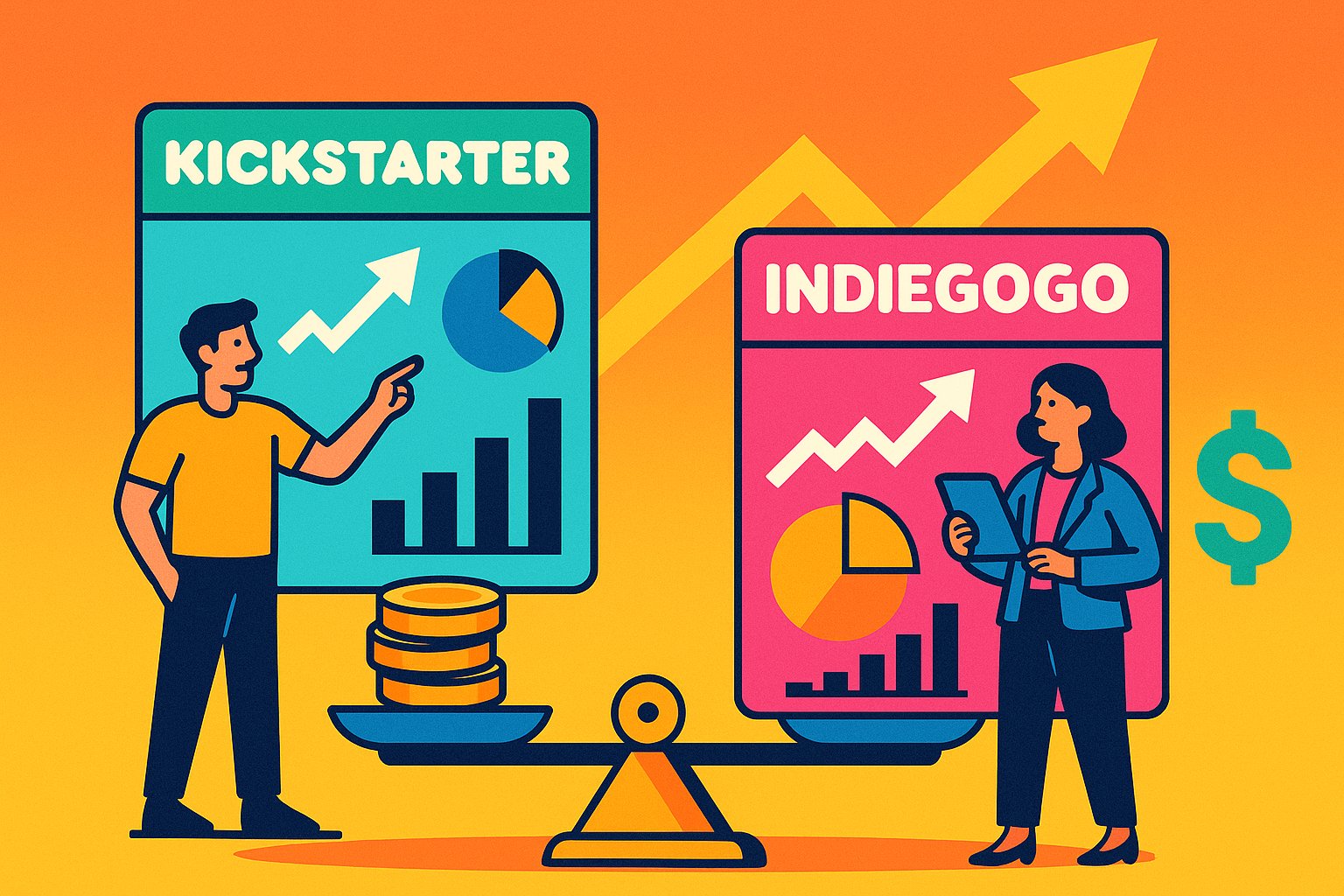Your Kickstarter Voyage
Embarking on a Kickstarter campaign is akin to setting sail toward uncharted waters: you possess a visionary concept, a meticulously designed project page, and an eager sense of anticipation. Yet without precise navigational tools—namely, campaign metrics—you risk drifting off course. From the moment you launch, every pledge, page view, and referral source becomes a vital waypoint, illuminating the currents that propel—or stall—your project’s momentum. Early pledge velocity serves as the most immediate indicator of campaign health, revealing whether your narrative and visuals resonate or require fine-tuning. Simultaneously, conversion rates and referral breakdowns confirm which audiences are engaging most deeply, allowing you to adjust messaging, realign marketing channels, and optimize reward tiers in real time. These metrics transform nebulous funding goals into actionable insights, guiding strategic decisions about when to introduce stretch goals, refresh creative assets, or intensify outreach. Rather than relying on gut instinct alone, a data-driven approach weaves together artistic storytelling and analytical precision, ensuring that each pivot, update, and promotional push is grounded in concrete evidence rather than conjecture. By cultivating this continuous monitoring mindset, you not only maximize your chances of hitting—or surpassing—your funding goal but also lay the foundation for enduring backer trust and community goodwill.
Pledge Velocity and Conversion Rates
Tracking pledge velocity—the rate at which funds accumulate over time—allows you to pinpoint exactly when support surges and when it wanes. Rather than passively observing daily totals, dissecting hourly and day-of-week patterns reveals peak engagement windows. For example, if evenings consistently yield a spike in pledges, scheduling updates or live Q&A sessions during that window can harness heightened attention. Conversely, spotting afternoon lulls might prompt you to reengage backers with fresh behind-the-scenes content or targeted email reminders. Conversion rates, which measure the percentage of page visitors who commit to pledging, offer complementary insights. High traffic counts lose impact if only a small fraction convert. Segmenting conversion rates by source—comparing Kickstarter’s discovery page versus targeted social ads—illuminates which channels drive quality traffic and which merely generate superficial interest. If mobile visitors convert at lower rates than desktop users, optimizing your page layout and reward descriptions for smartphones becomes an urgent priority. By monitoring both pledge velocity and conversion metrics, you transform abstract funding targets into real-time performance benchmarks, empowering you to allocate resources, refine content, and deploy incentives precisely when and where they matter most.
Referral Channels and Geographic Reach
Understanding where backers discover your campaign is essential to maximizing outreach efficiency. Kickstarter’s analytics categorize referrals into internal discovery pages, direct traffic, social media platforms, email newsletters, and external press or community blogs. If, for instance, a niche subreddit consistently drives a healthy stream of pledges, deepening engagement there—through an AMA or community-specific content—can yield outsized returns. Similarly, high email conversion rates suggest that refining subject lines and follow-up messaging could amplify pledge volume. Conversely, if paid Instagram ads generate significant clicks but few pledges, it signals a need to revise ad creative or refine targeting parameters. Geographic insights further enrich this analysis by revealing regional clusters of support. A strong showing from Berlin might encourage translating updates into German or emphasizing features aligned with European design preferences. A surge of interest from Tokyo could prompt outreach to local influencers or adjustments in shipping logistics to reduce cost barriers. By continuously monitoring referral sources and geographic data, you ensure your marketing spend and creative efforts are laser-focused on the segments most likely to convert, building a campaign that resonates across languages, cultures, and time zones.
Reward Tier Optimization and Community Engagement
Reward tiers represent the tangible exchange between your creative vision and backer support—but not all tiers will perform equally. Analyzing which pledge levels attract the most backers uncovers “sweet spots” where value perception meets affordability. If your $50 tier outpaces both $25 and $100 options, consider enhancing its appeal with limited-edition add-ons or early-bird bonuses. Conversely, an underperforming high-priced tier may benefit from reconfiguration: breaking a $200 tier into smaller, more focused $100 tiers—one emphasizing product bundles and another offering personalized exclusives—can unlock incremental gains. Beyond reward economics, monitoring community engagement metrics—comment volume, update view counts, and social shares—reveals the depth of backer involvement. A surge in comments following a project update often heralds a funding boost as backers discuss new features and invite peers to back the campaign. If update view counts are high but pledges stagnate, refine your messaging to address backer questions directly, solicit feedback on stretch-goal ideas, or unveil surprise collaborations that reignite enthusiasm. By weaving together reward-tier performance with community interaction data, you foster an ecosystem where backers feel heard, valued, and eager to share your project within their networks.
Forecasting and Post-Campaign Reflections
While real-time metrics illuminate current performance, forecasting tools enable you to anticipate where your campaign is headed and plan accordingly. By projecting pledge velocity trends and conversion rates into future days, you estimate whether you will meet, exceed, or fall short of your goal. If, for example, you achieve 60% of your target in the first week but then stabilize at a 5% daily growth rate, projections might indicate a funding shortfall. Armed with that insight, you can orchestrate a last-minute push—perhaps leveraging influencer partnerships or hosting a flash livestream—to address the gap. Alternatively, if forecasts suggest surpassing the goal, you can predefine additional stretch goals—like product enhancements or expanded distribution—fueling backer excitement and extending momentum. Once the campaign wraps, post-campaign analytics offer a trove of lessons. Late pledges received after closing can signal the impact of delayed press coverage or word-of-mouth, while add-on sales reveal which supplementary offerings resonated most. Survey response data—regarding shipping experiences or feature satisfaction—illuminate areas for improvement in fulfillment and product development. By treating the post-campaign phase as a continuation of your data journey rather than a denouement, you extract actionable insights that sharpen future endeavors, ensuring that lessons learned from one campaign feed directly into the strategic framework of the next.
Continuous Growth and Backer Loyalty
Metrics aren’t merely diagnostic tools; they foster a culture of continuous improvement and nurture long-term backer loyalty. By comparing performance across multiple campaigns—examining consistent reward tier elasticities, referral efficiencies, and engagement spikes—you identify repeatable patterns that inform strategic roadmaps. Geographic trends might reveal emerging markets worth prioritizing, while qualitative feedback from backer surveys can drive product innovation. Equally important, transparent reporting of key milestones—such as hitting 50% funding within 48 hours or surpassing 1,000 backers—cultivates trust and shared ownership among supporters. When you openly share how data guided pivots—highlighting, for instance, that a new 75 USD tier emerged after 40% of backers gravitated toward that price point—you reinforce backer confidence in your decision-making process. This transparency encourages your most engaged supporters to become brand ambassadors, extending your reach through authentic word-of-mouth. By inviting top backers to exclusive events, co-creation workshops, or early-access previews, you deepen emotional investment, converting one-time pledgers into lifelong advocates. In essence, the campaign metrics that guide each strategic turn also sow the seeds for a thriving, data-informed ecosystem—one where continuous optimization, community collaboration, and scalable growth converge to sustain crowdfunding success.




